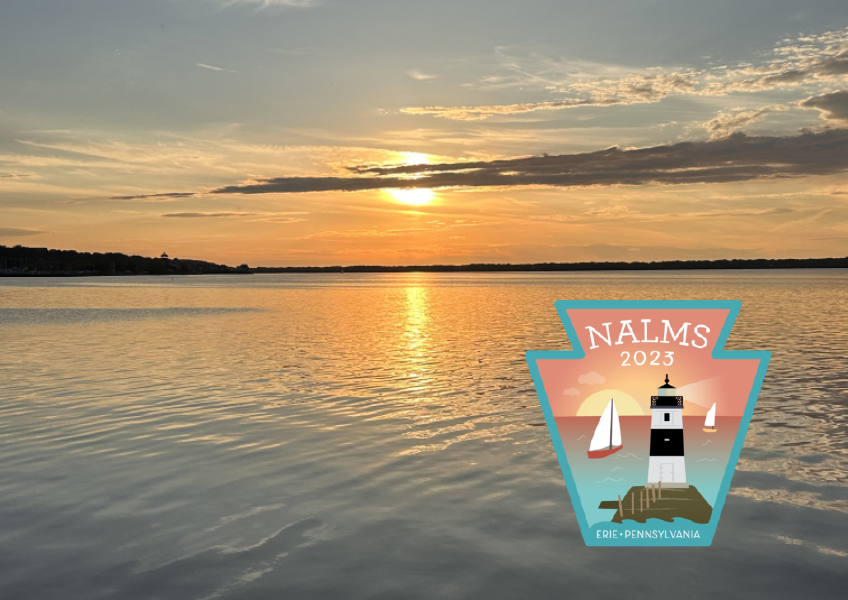
November 02, 2023| Education, Environment, People
By: Kyle Richter
Last month, I attended my first North American Lakes Management Society (NALMS) conference. The NALMS conference is an annual gathering that brings together scientists, researchers, policymakers, and lake groups from across North America to discuss the pivotal role lakes play in supporting our ecosystems, providing drinking water, and serving as recreational havens for a diverse array of interests. Held this year on the scenic shores of Lake Erie, in Erie, Pennsylvania, it was also my first trip to one of our Great Lakes and an all-around unforgettable experience.
The conference offered a comprehensive lineup of educational sessions catering to a wide spectrum of interests and expertise levels. The offerings ranged from introductory talks to in-depth discussions on advanced lake management techniques, providing a wealth of knowledge to absorb. I'd like to highlight three particularly noteworthy topics that left a lasting impression:
Artificial intelligence (AI) is making waves in various fields, including its use in aiding the management of invasive species in Florida's waterways. Using drone-captured aerial images, researchers at University of Florida’s Center for Aquatics and Invasive Plants trained AI models in identifying and pinpointing Water Hyacinth in different lakes. This innovation has enabled more efficient volunteer engagement in controlling the spread of this invasive species. A similar application could be considered at Lake Hopatcong to support our Water Scouts in the removal of invasive water chestnut as well as in monitoring for other potential invasive species.
Microplastics are turning up everywhere, including groundwater and even within the clouds. In the summer of 2021, we collaborated with Jersey City University to conduct a microplastic survey at Lake Hopatcong, which revealed high concentrations of microplastics and microfibers within the lake. How do we remove them and prevent more? Georgian Bay Forever, based in Toronto, Canada, is addressing this issue through its "Divert and Capture" program. This initiative employs innovative methods such as fitting filters on washing machines to trap microfibers and implementing in-lake systems to remove plastics along with a critical component of educating the public on strategies to prevent plastic pollution from entering our waterways.
As November settles in, winter preparations are on everyone’s minds. The tradition of treating our sidewalks and roads with calcium carbonate (salt) as a safety measure is a common practice in our region. But these treatments impact our waterways. In response to this concern, the Izaak Walton League of the Americas initiated the Salt Watch program in 2017 to closely monitor chloride (salt) levels in water bodies across the country and assess the impact to our waters. Surprisingly, the program has revealed that elevated chloride concentrations persist well into the summer months. In recent years, we have been actively participating in this initiative as part of the NJ Watershed Watch Network, and the results have shown elevated chloride levels around the lake. So, what’s the next step? Advocating for the implementation of "best salting practices" at the local, county, and state levels could make great strides in improving water quality and addressing this issue.
As I departed Erie, I felt more committed than ever to the protection and preservation of our lake. The knowledge I gained at the conference has left me excited to explore how these valuable lessons and newfound insights can be effectively applied in our efforts to foster a vibrant and healthy Lake Hopatcong!